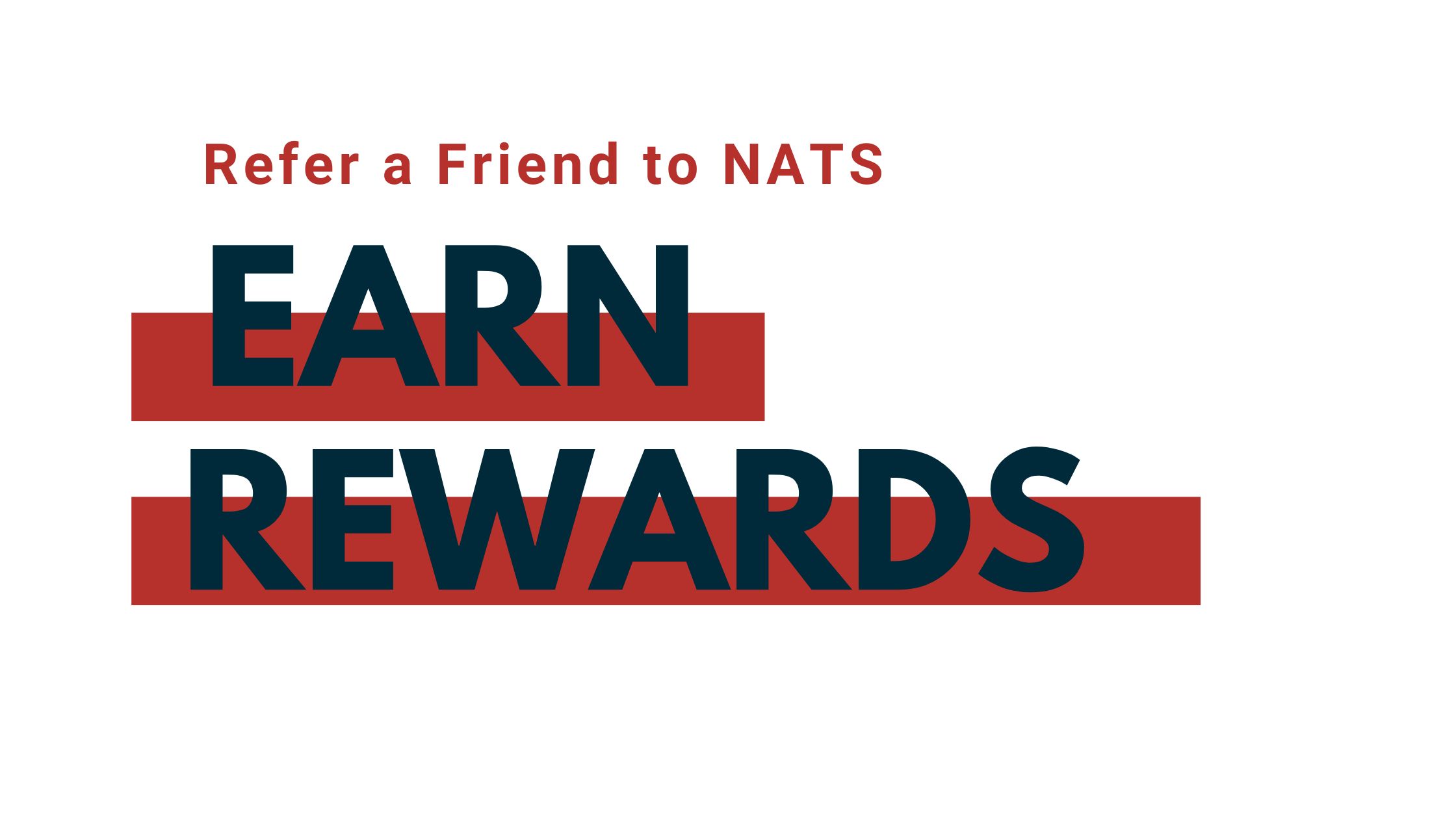Tag: Welding Career
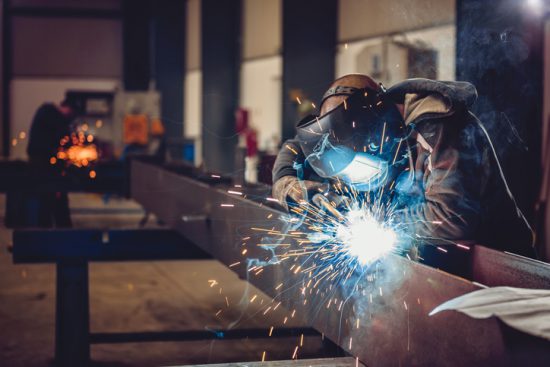
After building industry skills and expertise during your welding training, there’s only one thing between you and a successful career as a professional welding technician. It all comes down to the interview. Performing well in an interview will show a potential employer that you’re not only a qualified candidate for the respective position, but also that you have what it takes to succeed as a welder. While the interview process might seem intimidating at first, when you take the proper steps to prepare for this important meeting, you’ll be sure to succeed. Below, discover five different tips for a successful interview.
1. If You’re Seeking a Welding Career, Research the Company Before the Interview
While some welding skills and processes might be universal, the fact remains that no employer is the same. There are a variety of companies within many different industries, which require skilled welding technicians to perform certain tasks. When preparing for an interview, it’s important to conduct research on the company you’re interviewing with, as well as the position you’ll be applying for. After your welding technician training, conducting this research prior to the interview will ensure that you’re prepared to describe to an employer why you’re a good fit for the position in question. Additionally, you’ll be prepared for any questions that an interviewer might ask you regarding what you know about their company.

2. Make Sure You Dress for Success
If you’re seeking a career as a welder, it will be important to dress appropriately before arriving at any interview. Within the welding industry, it’s typically standard to dress as you would for a welding job. Attire such as a long sleeve shirt, work boots, and jeans are all acceptable to wear for an interview. Additionally, you might want to bring along some basic welding tools and safety equipment, as you may be asked to perform a bench test or other welding procedures for your interviewer.
3. Be Prepared to Answer Questions About Yourself
While your interviewer will want to ensure that you have the necessary skills to succeed in the role in question, they’ll also want to know who you’ll be as an employee. Thus, during an interview for any welding career, you can expect some questions about your motivations for entering the welding industry, as well as your strengths as a welder. Preparing answers to questions like these will help you to show an interviewer who you are as a welder, and what benefits you’ll bring to their company if you’re hired for the position.

4. Demonstrate Your Credentials
In any job interview, it’s important to be prepared to demonstrate your credentials to your potential employer. You’ll want to bring your resume in paper form, as well as proof of your completion of a welding training program. If you have a relevant welding certification, you should also bring this along to an interview. Once your interviewer sees that you’ve completed the required training, they’ll be secure in the knowledge that you have what it takes to succeed.
5. Prepare Questions for Your Interviewer
Last but not least, never show up for an interview without at least a few questions prepared for your employer. In order to come up with your questions, you can use the research you’ve conducted about the employer you’re interviewing with, as well as the job description. An example could be asking the employer what a regular work day would look like at their company. When you ask questions during an interview, your interviewer will know that you’re taking this opportunity seriously, as you’ve taken the time to engage in critical thinking about the position at hand.
Ready to enrol in welding courses?
Launch a successful career with a welding program at the North American Trade Schools.

If you’re pursuing training in welding, know that there are a range of opportunities that await you in the industry today. Boilermaking, jewel and stonework, plumbing, and transportation assembly are just a few of the common options in this trade. The job market for skilled welders is expanding and now spans a wide range of manufacturing sectors. If you’re looking for a diverse, creative and manually-intensive career, welding offers rewarding prospects.
A great welding program will include both theoretical and hands-on training. Trainee welders can expect to learn about the modern methods and uses of welding, and be ready to apply them to an industry-grade job upon graduating.
To understand more about your options, let’s take a look at 4 surprising facts about this skill.
1. There Are Many Different Types of Welding
As a trainee welder, you’ll practice using a number of different methods. For those without any prior knowledge of the trade, welding school offers comprehensive training to
get you to grips with the mechanics of welding. Welding courses will familiarize you with modern equipment used across different processes to prepare you for practical industry work. At the North American Trade School (NATS), students gain both theoretical and hands-on understanding of major welding methods. These include Gas Metal Arc Welding, Gas Tungsten Arc Welding, Flux Cored Arc Welding, and Shielded Metal Arc Welding. Upon graduating, students often have the chance to apply this knowledge to an apprenticeship as an ironworker, pipefitter, and more.
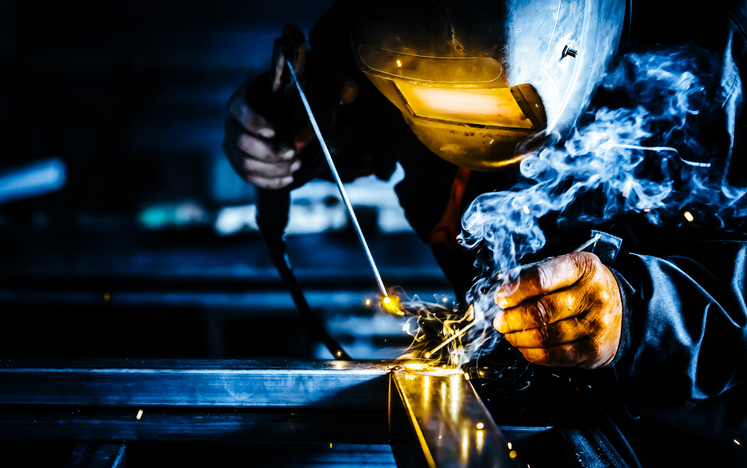
2. Welding Teaches You Many Different Lessons
As a welder, you’ll master more than just manual and technical skills. It is a trade that teaches resilience, creativity, and organization when working in different settings. Welders are often exposed to smoke, heat, and other harsh substances in their work, while using technical equipment such as drills and grinders. Precision, stamina, and awareness of your surroundings are invaluable skills in this trade. In the NATS welder program, courses cover more than the basics of equipment and the processes of welding joints together. Students also learn the fundamentals of creating a safe working environment, and how to identify and control hazards in welding.
3. Most Man-Made Substances Involve Welding
Over 50% of man-made products today are constructed using welding. From large-scale industrial equipment to automobiles, to personal computers, welding techniques are used in most manufacturing processes. At our NATS welding program, practical lab training teaches students the techniques essential to real-life productions. Over a 55-week program, students at NATS have plenty of access to on-campus labs. Here, they’ll gain first-hand experience of modern equipment, and be ready to apply that knowledge to work in their field. Courses at NATS also teach students how to decipher welding symbols on blueprints and apply basic math to perceive volume, area, and effective part layout.

4. Welding Opens The Doors To Many Career Paths
Welding is a skill you can utilize across many different industries. Technological devices, transport links, and other industrial equipment all require welding to function. Welders can apply their skills to finish making popular consumer items such as toys, computers, and electronic devices. As such, modern production companies have an ever-growing demand for skilled welders. After completing an apprenticeship, trained welders can go on to work in the design and manufacturing of common appliances. A good welding college will offer you the training to support each and every career ambition. Graduates will come away with an experience of technical equipment, modern fabrication methods, and a trained eye for structure and design.
Do you want to learn more about the benefits of a welding career?
Contact North American Trade Schools today!
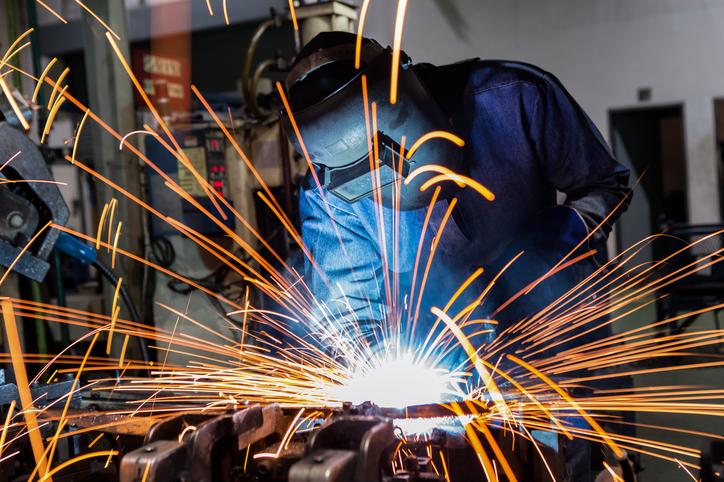
In a welding project, arc-on time has a direct effect on the number of parts completed during manufacturing operations. However, what many manufacturers don’t realize is that the average arc-on time is typically 10% to 12% of the welding process. Increasing arc-on time can result in improved productivity and cost savings, and thus, welding professionals should make boosting this metric a priority. There are many factors that contribute to improved arc-on time, and in order to see results, the entire welding process must be considered.
If you’re training for a career as a welder, here are three ways to increase arc-on time during a welding project.
1. If You’re in a Welding Career, Increase Arc-On Time By Choosing the Right Welding Process
If you’re having trouble increasing your arc-on time, start by analyzing the welding process you’re using. Making a change to the process can result in improved efficiency and increased arc-on time, but many manufacturers are hesitant to make this change due to the reapproval and further training necessary to switch processes. Options for welding processes include standard GMAW (gas metal arc welding), modified short-circuit GMAW, or a pulsed GMAW process. Switching from a standard to a pulsed process can result in benefits such as increased travel speeds, lower heat input, and reduced amounts of spatter, contributing to increased arc-on time.
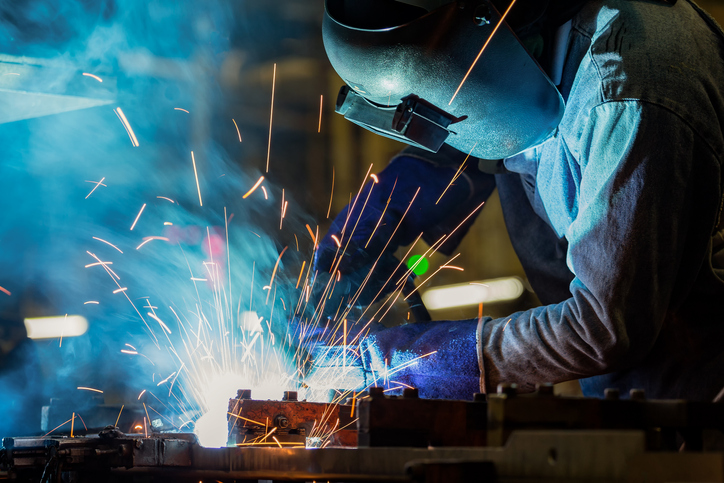
Professionals in a welding career can also make changes to their process by utilizing metal-cored or flux-cored wires instead of a solid wire, which is conventionally used in GMAW applications. Depending on the materials being welded, a metal-cored wire can result in faster travel speeds to boost arc-on time. Welders may also utilize different shielding gases to improve the productivity of their process. Most manufacturing operations utilize 100% carbon dioxide shielding gas, but substituting a mixed gas, such as one composed of 90% argon and 10% carbon dioxide, can produce fewer spatters and faster travel speeds. This allows welders to spend less time on post-weld grinding—increasing arc-on time.
2. Welders Can Check Their Parameters and Consumables to Increase Arc-On Time
Arc-on time can be negatively impacted by inaccurate parameters and faulty consumables–factors which not only increase inefficiency, but are preventable. When welding professionals check that their parameters are correctly inputted before beginning the welding procedure, they can reduce the chances of having to solve issues through rework or spending excess time on post-weld cleanup. Professionals can check parameters such as heat input, travel speed, and wire stick-out. With the right travel speed heat will be controlled, reducing spatter and optimizing penetration. Additionally, if too much wire is sticking out, there will be excessive spatter, requiring more rework and extra post-weld cleanup.
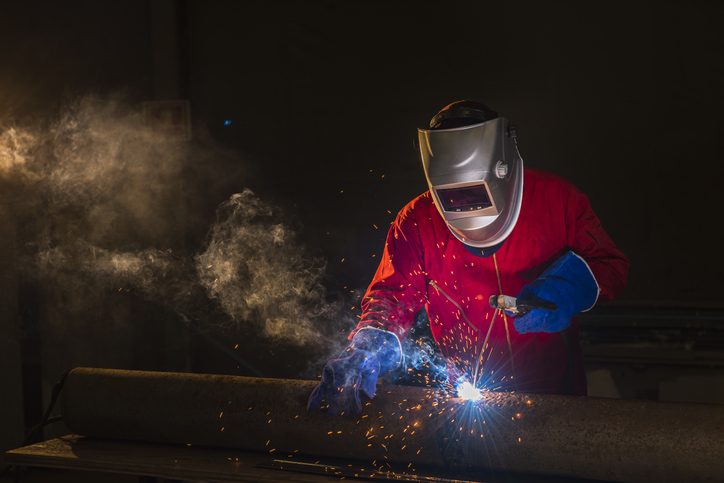
Before beginning the welding process, those in welding technician training can also ensure that their consumable connections are properly adjusted and correctly installed. Welding professionals can check for loose connections or worn weld cables to prevent a poor quality welding job or increased spatter. If the quality of these connections is confirmed beforehand, troubleshooting time can be reduced.
3. Take Advantage of Technology to Increase Arc-On Time
Advances in technology offer many advantages to welders looking to improve their arc-on time and increase efficiency. Technology is being increasingly used to improve welding power sources–making welding machines more accurate and easier to use. Some welding power sources today feature synergetic control, which allows them to automatically make changes in accordance with the operator’s adjustments. This also allows the operator to increase their arc-on time without worrying about parameters. Today, welding systems also offer a simplified machine setup–reducing the time welders spend setting up by adjusting other parameters according to the material thickness. These technologies improve accuracy, reducing spatter and post-weld cleaning to optimize arc-on time.
While these three factors contribute to increased arc-on time, those interested in entering a career in welding can also increase their arc-on time by receiving the proper training. Students at the North American Trade Schools’ (NATS) welding program benefit from hands-on training to prepare for a welding career. For welding graduate Emily Harrison, her “favourite thing about [NATS] was the knowledge of the teachers and how much practical work you were able to do.” With training from NATS, you’ll be equipped to identify ways in which arc-on time can be increased throughout your welding career.
Are you interested in taking welding courses?
The North American Trade Schools’ welding program can launch your career—learn more today!
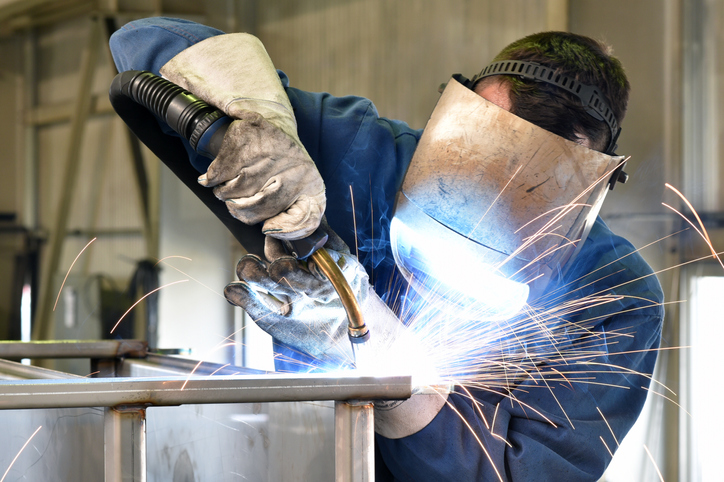 If you’re someone who enjoys the satisfaction of building something with your own two hands, then a career as a welder might be for you. With their skill set, welders are equipped to build and repair a variety of things, from metal furniture to huge vessels such as ships. With so many things depending on the work of welders, it’s no wonder that welding is a respected and highly skilled profession.
If you’re someone who enjoys the satisfaction of building something with your own two hands, then a career as a welder might be for you. With their skill set, welders are equipped to build and repair a variety of things, from metal furniture to huge vessels such as ships. With so many things depending on the work of welders, it’s no wonder that welding is a respected and highly skilled profession.
So what does it take to join it? The first step is completing a pre-apprenticeship program before starting your apprenticeship. Here’s a look at what you can search for when making your decision.
Your Welder School Should Offer Hands-On Welder Training
Perhaps the most important thing in choosing a welding school should be whether the program offers hands-on experience. At the North American Trade School (NATS), students benefit from both a hands-on and theoretical approach to welding to ensure that graduates are ready to step into the field with confidence.
Students can gain experience in welding while using modern equipment, building skills in many different welding processes such as Flux Cored Arc Welding, Shielded Metal Arc Welding, Gas Metal Arc Welding, and Gas Tungsten Arc Welding. For welding graduates like Emily Harrison, NATS was a great choice because of “how much practical work [she] was able to do.” Because welding processes can often be complex, it’s important to complete your welding training in a hands-on setting such as the one NATS offers.
All Welders Need Expert Teaching
Welding is a complicated job, requiring familiarity with a variety of safety measures, equipment, and procedures. In order to become a qualified welding professional, it’s important to choose a welding program that will not only equip you with the right certification, but will teach you the techniques and skills necessary to succeed. When choosing a welding program, look for one that prioritizes access to knowledgeable instructors every step of the way. At the North American Trade School, instructors are experts in their fields, and they’ll be able to equip you with the training you need to excel in a wide variety of welding techniques, while following the correct safety procedures. The welder school you choose should offer courses taught by expert instructors in order to prepare you for your career.
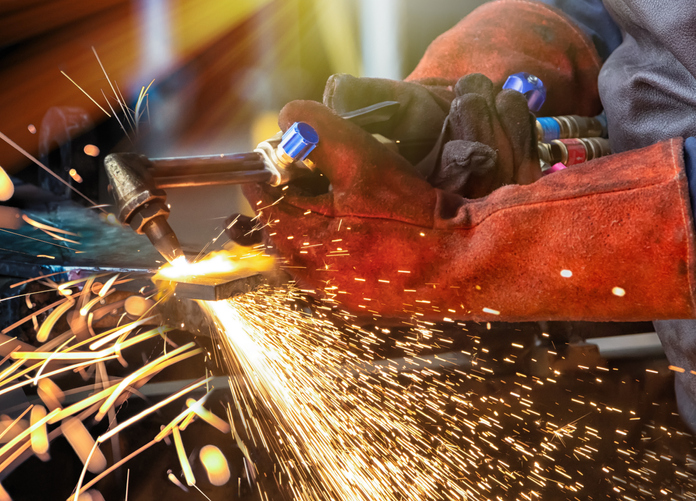
During Your Welding Training, Your Instructors Should Be Available to Guide You
Another key component to your welding education should be access to plenty of support from your top-notch instructors. In addition to being experts in their field, your instructors should be there to guide you through welding best practices, processes, and safety protocols, and answer any questions you may have.
Welding graduate Adam Maize says that what he enjoyed most about NATS was “probably the instructors… They were very open to conversation and explaining what to do here.” In a hands-on training environment, instructors who are there to make sure that you’re understanding every step of the process are essential to a solid education in welding.
Are you ready to begin your welding career?
Check out the North American Trade School’s welding program to get started.
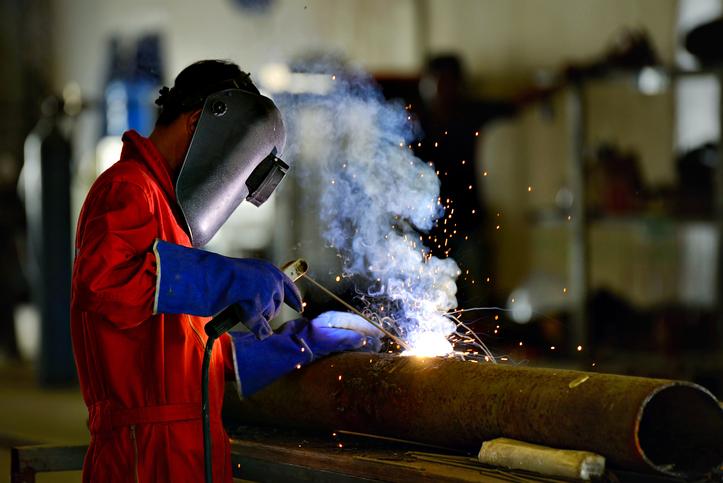 Welding, while a safe profession when the correct precautions are taken, involves many risks and hazards. Welders can work with high temperatures, gases and fumes, electrical voltage, sparks, and ultraviolet rays. In order to protect themselves against explosions, burns, fumes, eye damage, and more, welders must ensure that they are following safety best practices. If you’re thinking about becoming a welding operator, make sure that you’re aware of these safety tips in order to ensure that you’re always staying safe on the job.
Welding, while a safe profession when the correct precautions are taken, involves many risks and hazards. Welders can work with high temperatures, gases and fumes, electrical voltage, sparks, and ultraviolet rays. In order to protect themselves against explosions, burns, fumes, eye damage, and more, welders must ensure that they are following safety best practices. If you’re thinking about becoming a welding operator, make sure that you’re aware of these safety tips in order to ensure that you’re always staying safe on the job.
Those with a Welding Career Should Stick to a Routine–Before, During, and After a Welding Job
Before beginning any welding job, it’s important to cover all your bases to ensure that the area you’re working in is as safe as possible. Welding operators should always review their operating manual, which contains all the safety information and regulations provided by the manufacturer.
Make a list or mental note of things to check for before, during, and after your welding project. If you’re in a welding career, check for any hazards before beginning your project, such as flammable materials nearby. Make sure to check the equipment you’re working with. Is it functioning properly? Could you injure yourself accidentally on nearby equipment? Do you know where everything is for easy access? During your project, stay mindful of surfaces or surrounding materials that could be hot and should be avoided. After you’ve finished the job, make sure to clean up your workspace. Return all equipment, and ensure that there’s no possibility of a fire occurring.
Wear the Right PPE (Personal Protective Equipment)
Welders should never begin a project without wearing the right PPE (personal protective equipment). Your PPE will keep you injury-free and protect you from burns, vibrations, and exposure to ultraviolet rays. Your PPE should consist of cotton clothing treated with flame-resistant properties. Wear leather boots that cover your ankles, and never roll up your sleeves or cuffs or unbutton your shirt, which can allow skin to become exposed to sparks or enable sparks to catch in cuffs or pockets, where they can burn. When welding, always wear safety glasses with side shields to protect your eyes from debris and sparks, and always wear protective gloves. Wear a helmet equipped with the proper shade lens for your project to prevent exposure to arc rays, which can cause painful injury to eyes and skin.

Ensure You’re Using Proper Ventilation
If you’ve attended welding school, you’ll understand the dangers of overexposure to welding fumes. In order to avoid this, make sure that your workspace is equipped with proper ventilation systems to remove fumes and gases from the breathing zone. Adequate ventilation will depend on the type of base metal and rod you’re using during your welding project, as these contain different levels of metal oxide compounds. It’s likely that your employer will provide a ventilation system, but make sure to wear a respirator unless you’re sure that exposure levels are below safety limits.
Take Precautions to Prevent Fires
Welding arcs can pose a lot of danger due to the intense heat and sparks they create. Make sure you remove all flammable materials from your work environment or cover them with a fire resistant material before beginning. Check to make sure you know where the fire extinguishers and alarms are located, check that they are functioning, and identify the fire exit nearest to you. If welding near flammable materials, have someone keep an eye on the sparks. Always stay in a work area for at least 30 minutes after finishing a project to ensure that the sparks created will not start a fire.

Stay Dry to Prevent Electric Shock
Welders should take great precautions to ensure that electric shock doesn’t occur, as shock can result in injury or death in serious cases. Electric shock can occur by contact with an electric circuit, which commonly occurs when two metal objects that have voltage between them are touched, or when secondary shock is experienced from a welding circuit. Always inspect electrode holders for damage before starting a project, checking that they are properly insulated, which ensures that the welder will not touch the hot parts within the electrode holder. Be sure to wear gloves and PPE that is completely dry when handling electrodes or electrode holders.
Are you interested in attending welding college?
Check out the North American Trade School’s program options for future welders.
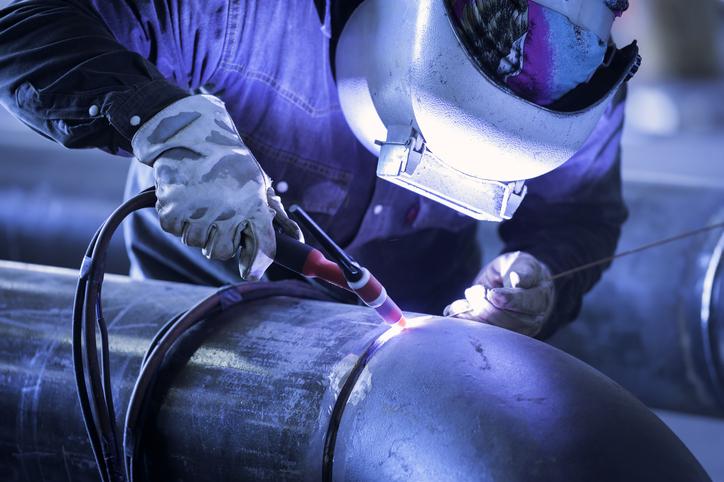 In the welding world, gas tungsten arc welding (GTAW)—also frequently referred to as tungsten inert gas (TIG) welding—produces welds via a process using tungsten electrodes. A shielding gas protects the weld pool area from air pollution, and inert gases such as argon, helium, or a mixture of the two are used.
In the welding world, gas tungsten arc welding (GTAW)—also frequently referred to as tungsten inert gas (TIG) welding—produces welds via a process using tungsten electrodes. A shielding gas protects the weld pool area from air pollution, and inert gases such as argon, helium, or a mixture of the two are used.
Due to the high level of precision in this form of the trade, GTAW is typically reserved for high-quality jobs requiring more attention to detail. It’s also the form most appreciated by experienced welding practitioners, due to its ability to turn out stronger welds with cleaner, more artful results and higher integrity.
To understand more about GTAW welding, let’s take a look at five interesting facts about this method.
1. It Takes Longer to Master Than Other Welding Types
The finicky welding method of GTAW requires a lot of practice to perfect. In fact, it’s usually only attempted once a welder has a solid grasp in some of the more basic forms of the trade, such as metal inert gas (MIG) welding.
The more complex GTAW procedure requires a non-consumable tungsten electrode to run a current through the metals the technician is looking to weld together. After the metals have been liquified by the heat of the electrode, the filler material is hand-fed into the weld pool. Those interested in a welding career should know that this method is slower to perform than more basic “point and shoot” one-handed weld methods, and is a lot more difficult for inexperienced users to accomplish.
2. It Requires a Lot of Focus
Any type of welding is reliant on lots of concentration to avoid mistakes and accidents. If you’re attending welding school, you’ll be interested to hear that GTAW welding requires an even sharper level of focus. Both hands are needed to work on a GTAW job, with the welding torch in one hand and the filler material in the other.
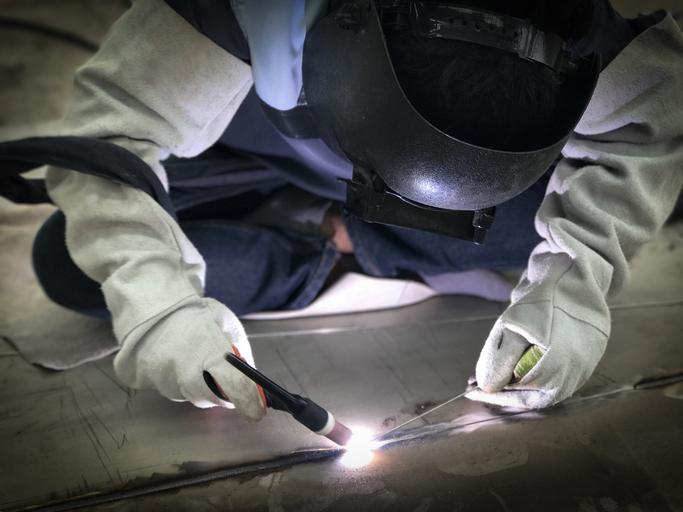
A lot of concentration and a steady hand are needed to feed the wire as the operator attempts to move smoothly through the weld. The clean results at the end of this painstaking process come from a lot of patience, along with razor-sharp focus to prevent mishaps and unsightly errors.
3. Its Ability to Apply Controlled Heat Allows for Cleaner Results
On GTAW welds, a foot pedal controls the electricity coming to the torch, allowing for a level of deep penetration and accuracy that prevents the arc weld splatter one might get with a more basic type of welding. This control of the heat allows for much cleaner results—perfect for more advanced, high-precision jobs.
The welder doesn’t even necessarily need filler material here to get a successful join. This is important to remember, as welding requiring any filler material is usually a messier procedure. The precise metal-to-metal welds that GTAW welding enables allows for the operator’s desired smooth, clean surface. Producing an aesthetically-pleasing pattern and uniform bead, these welds often need no more than a light polish to finish.
4. It’s Ideal for Working on Stainless Steels
GTAW is well-suited to working on thin sections of light metals, including magnesium and aluminum. The method is particularly favourable for use on stainless steel welds. This is partly due to the aesthetics of these jobs, where the uncoated fabrication of the material means the weld remains exposed for the world to see. Additionally, stainless steels are a more expensive metal type, requiring significantly tidier finishes.
5. It’s More Expensive for Welding Career Pros to Complete
Due to the level of precision and attention to detail required, a GTAW weld is one of the most time-consuming jobs to complete. The process also has a low deposition rate to consider, with this rate measured in pounds per hour, deposited at a particular welding current. Additionally, a lot of GTAW welding equipment is at least twice as expensive as more basic tools of the trade.
Factoring in the time required from the highly-skilled welder multiplied by the hourly rate, plus the cost of resources needed on higher-quality jobs, these welds are much more costly to complete than other forms of the trade.
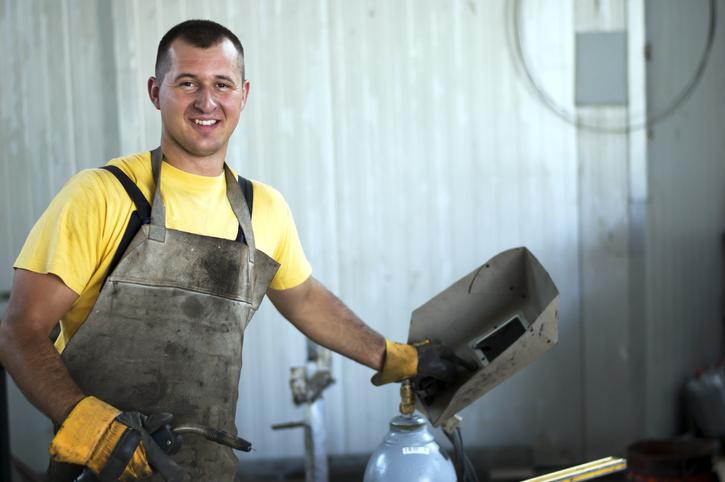
Interested in pursuing a thriving career by earning your professional welding diploma?
Contact North American Trade Schools today for more information on its exciting welding diploma program!
Why Learning About Shielded Metal Arc Welding Can Help Your Welding Career
September 10, 2019
It’s an essential process for aspiring welders to learning, but how exactly does it work, and why do you need it in your welding career? Shielded metal arc welding (SMAW)—known by some as “stick welding”—is where a weld is made through an electric current that forms an arc between a weld pool and a flux-covered electrode, leading to the formation of gases that shield the weld pool and give it a layer of slag. As a result, the weld is protected from contamination.
Being one of the most basic and oldest welding techniques, SMAW may seem at first like it has a big learning curve, but it is actually quite simple once you’ve fully understood its inner workings. Here’s how SMAW works, and how it can be helpful for you and your welding career.
Those in Welding Technician Training Should Familiarize Themselves With the Process
Since it’s one of the simplest processes in welding, it goes without saying that those hoping to have a career in the profession should understand how shielded metal arc welding works. First, the electrode briefly comes into contact with the workpiece, striking the arc, which results in parts of the electrode being passed onto the weld pool before the covering disintegrates and forms protective gases. With the power source connected to a circuit, one of its two output terminals makes a connection with the electrode either with alternating current or direct current. Additionally, SMAW electrodes contain covering with various elements and materials that allow the welding process to be carried out, as not having the covering would make the arc hard to maintain and cause the weld bead to be improperly shaped.
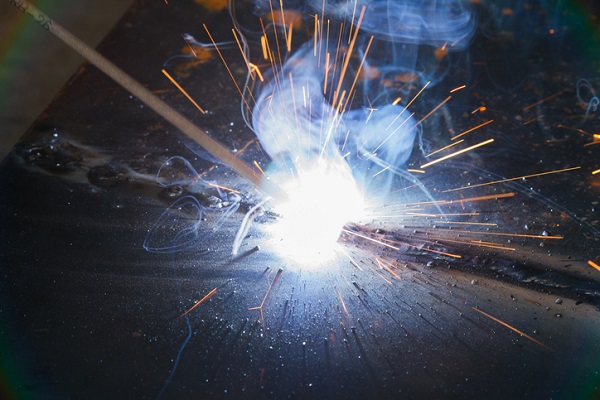
Shielded Metal Arc Welding Needs to Meet Three Criteria to Work
Since SMAW is something you’ll learn in welding technician training, it’s important to remember that there are three steps the electrode in any SMAW application must take to properly weld. These are the ability to shield both the weld metal and the arc, the adding of metal to the weld, and the ability to sustain the arc. Furthermore, SMAW has three additional functions when the covering is heated well enough, which are the formation of the shield for the metal and the arc; the covering ionizing so that it can support the arc plasma; and the fluxing of the metal so it forms a cover on the weld bead as it cools, eventually giving off gases to avoid any contamination to the weld.

There Are Many Upsides to This Type of Welding—and Various Things it Can Weld, Too
The advantages of performing SMAW for your welding career are vast. Not only can it suitably weld a number of different alloys, metals and steels, but it’s also a process with various other upsides, not the least of which are its simplicity and relatively inexpensive nature. For example, the SMAW process isn’t as draft or wind-sensitive as gas shielded arc welding can be, nor does it necessitate the use of auxiliary gas shields. SMAW can also be applied to various welding positions, as well as its electrodes being able to access, and be applied to, hard-to-reach areas such as blind spots. Given how versatile and productive the process can be, it’s easy to see how advantageous it is for many welding projects.
Want to get your welding diploma?
Contact North American Trade Schools for more information about our Welding diploma program!





